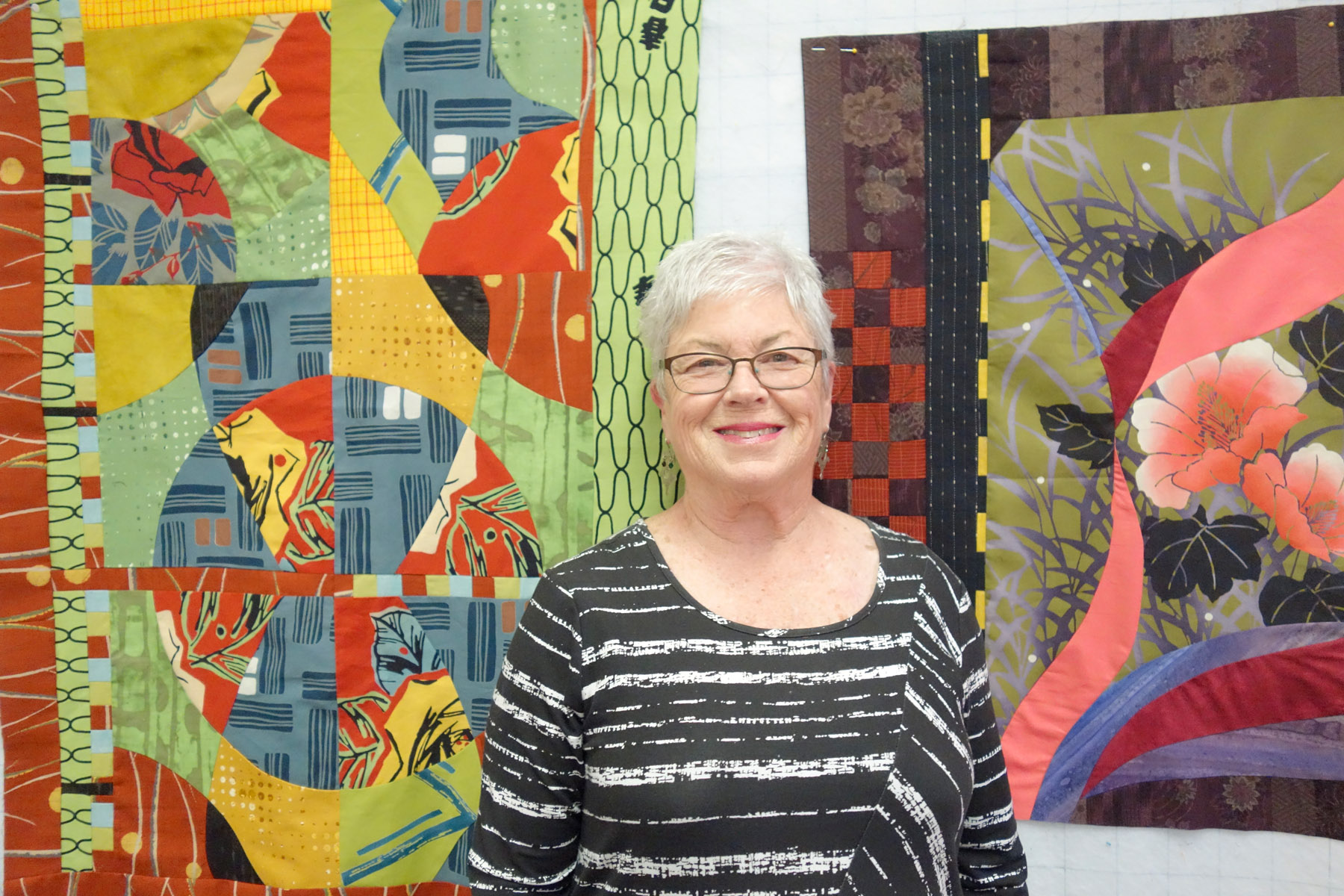
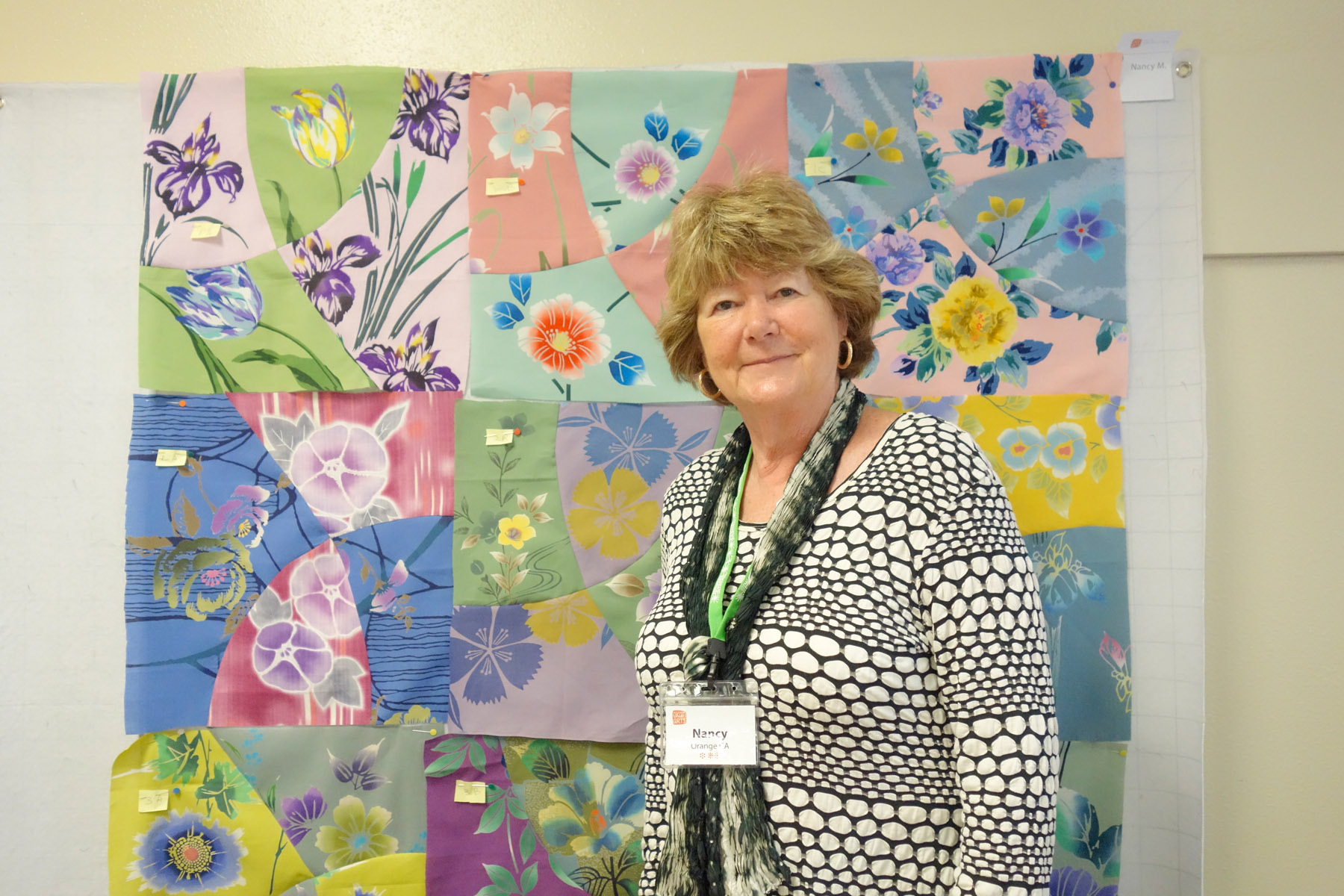

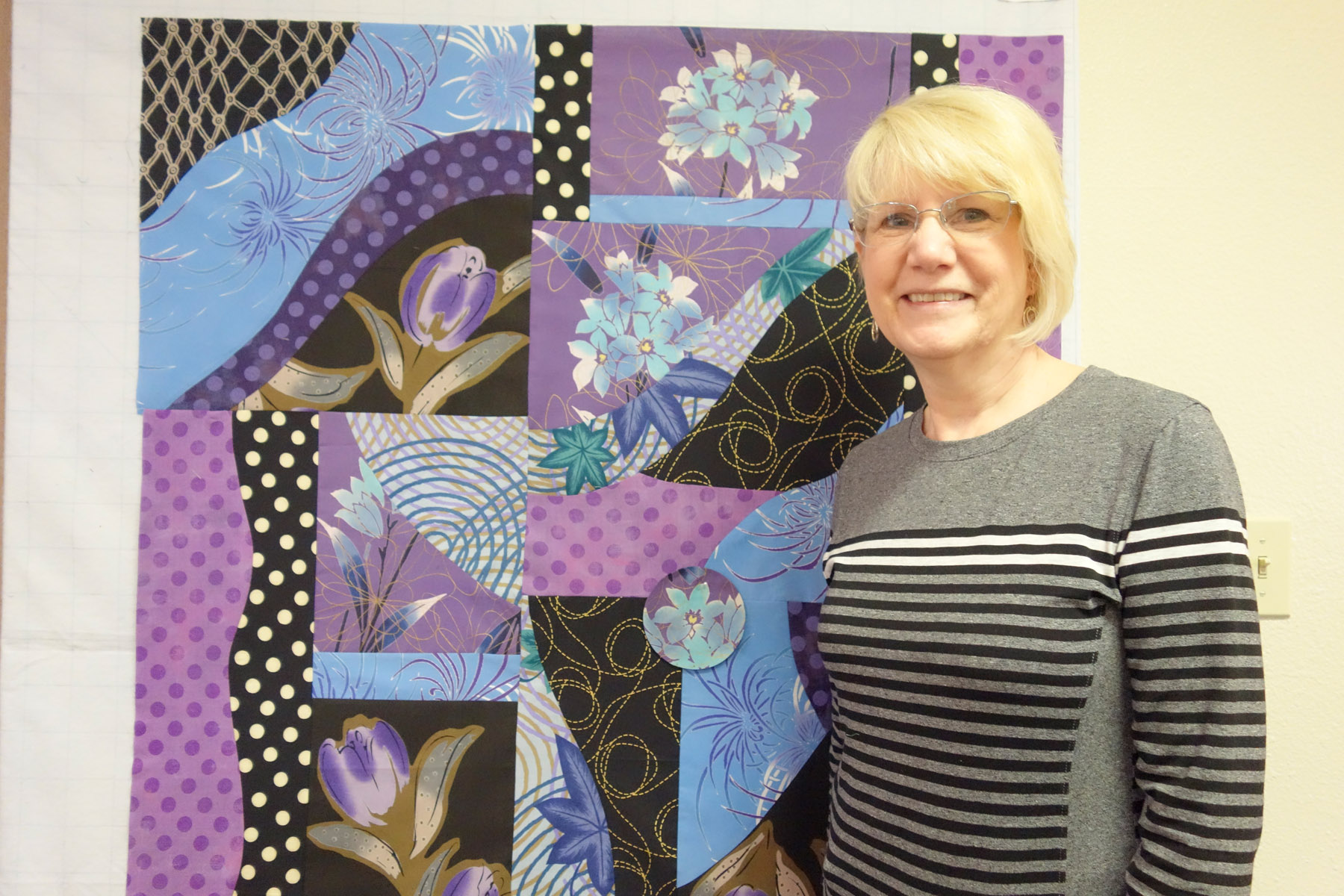
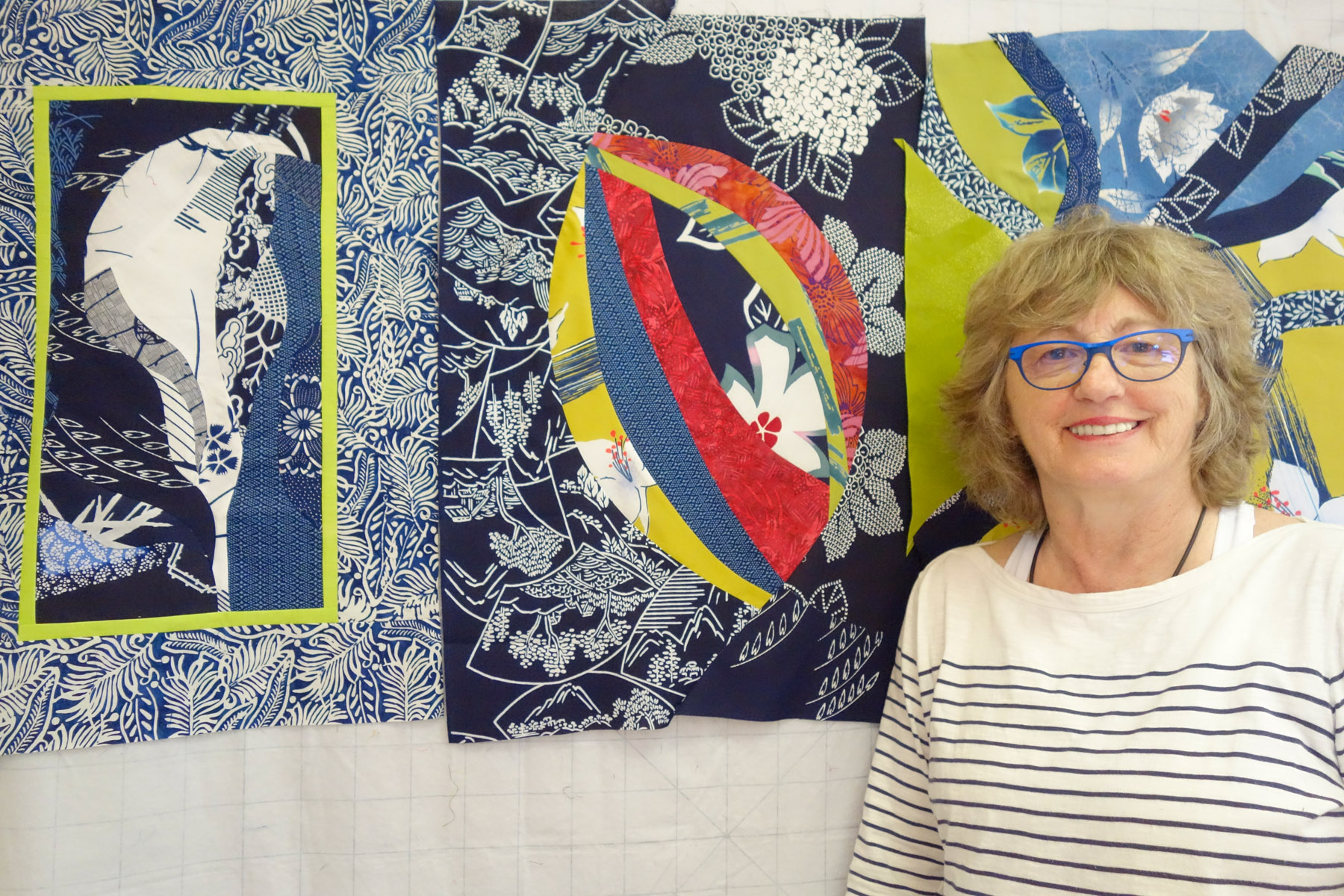
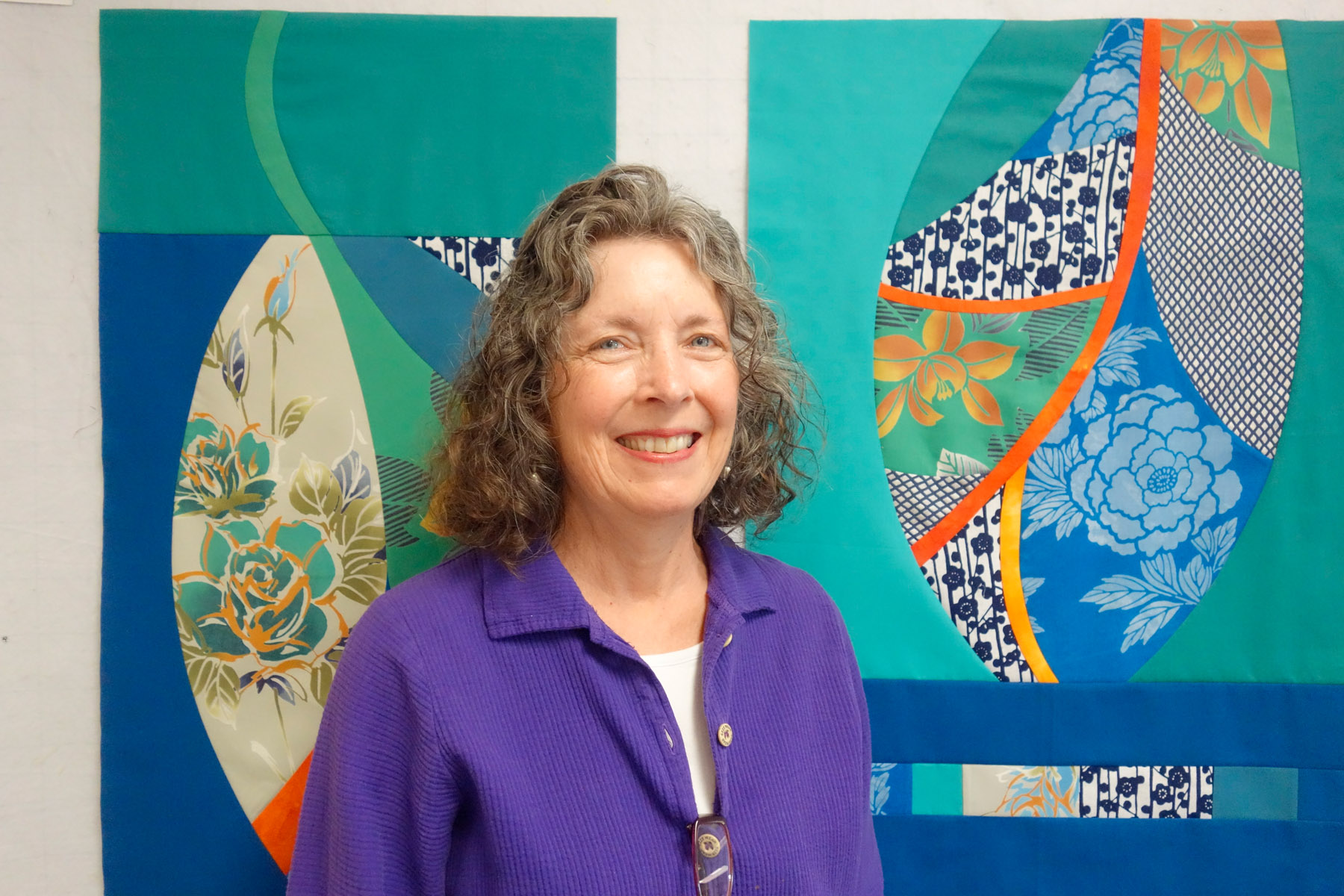






Caryl's work is always colorful with movement that feels like motion. The quilt "Jacuzzi Jazz" (60"x60") is a great example. There are curves everywhere and you can feel the movement in the "Jacuzzi". She used Applipiecing, Digital Fabric Printing, Hand Dyeing, Fabric Painting, Machine Piecing, and Free-Motion Quilting.
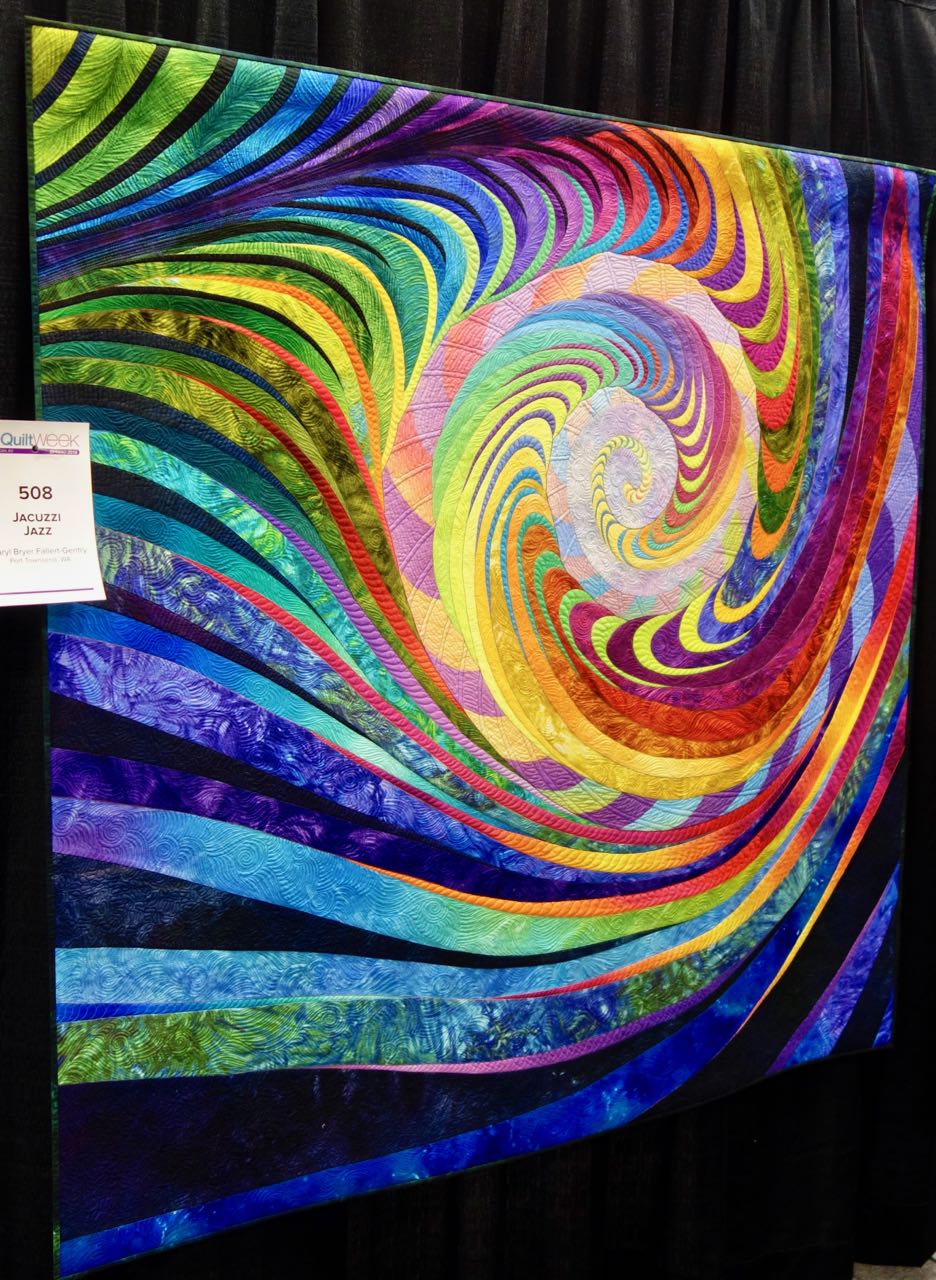



Ricky thought this quilt might be based on the sun "exploding" over a cityscape. Turns out it's based on a Croton, a houseplant. Would you have guessed?
Star Members can watch Katie Pasquini Masopust in Show 2210: Reimagining the Log Cabin Block.
ExplosionbyKatiePasquiniMasopust - 35 Pieces Non-Rotating
ExplosionbyKatiePasquiniMasopust - 99 Pieces Non-Rotating
ExplosionbyKatiePasquiniMasopust - 300 Pieces Non-Rotating
ExplosionbyKatiePasquiniMasopust - 35 Pieces Rotating
ExplosionbyKatiePasquiniMasopust - 99 Pieces Rotating
ExplosionbyKatiePasquiniMasopust - 300 Pieces Rotating

Original Photo: Mary Kay Davis
Ricky thought this quilt might be based on the sun "exploding" over a cityscape. Turns out it's based on a Croton, a houseplant. Would you have guessed?
Star Members can watch Katie Pasquini Masopust in Show 2210: Reimagining the Log Cabin Block.
 Original Photo: Mary Kay Davis
Original Photo: Mary Kay Davis
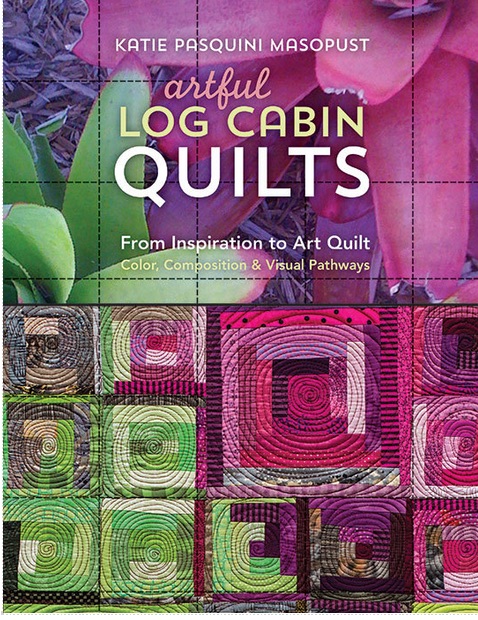
Ricky has a wonderful new pattern for Christmas, Joyeux Noël! Learn more about it in this latest video from Alex and Ricky, then check below for order information.
|
|
|||
|
|
|
| GET JOYEUX NOËL PATTERN ONLY - $21.95 |

Do you dream of creating machine embroidery without the aid of a hoop? Heidi Farmer defies the skeptics who said it couldn’t be done as she shares tips and tricks for stitching hoop-free designs to your heart’s content using a revolutionary method on her Innova. She also shows you how to embroider a hand-drawn design, and shares a quick method for personalizing your baby quilt on a longarm.
Then, RNK educator, Judy Fredenburgh, shares the ins and outs of stabilizers.
Star Members can watch Heidi and Judy in Show 2211: Hoop-Free Longarm Embroidery when it debuts this Sunday, May 20, 2018.
With graduation celebrations taking place this month for many families, we thought this timely article would be especially appropriate. Quilts and graduations have always gone hand in hand. Many a quilter has stayed up late burning the midnight oil while adding the final touches to a graduate's special quilt. Dr. Marian Ann Montgomery delights us with another aspect of college study from an earlier time.
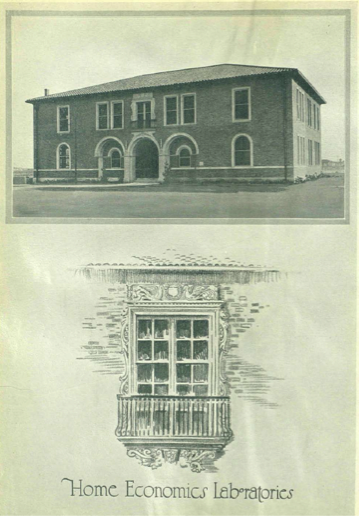
Home Economics building at Texas Technological College in 1925,
where the quilt tops were made.
Image from 1926 edition of La Ventana, Texas Technological College Yearbook.
Quilting was Taught at Texas Technical College in the 1930s
by Marian Ann J. Montgomery, Ph.D.
Curator of Clothing and Textiles, Museum of Texas Tech University
Although not often found on the for credit course list at universities today, in the 1930s students in Miss Erwin’s 435 class at Texas Technological College were taught to make quilt tops. Two quilt tops and a finished quilt came into the Museum from that class through the Department of Clothing and Textiles of Texas Tech University in 1976. Shown below is the one finished quilt, a version of Drunkard’s Path in the popular apple green color.

Drunkard’s Path Quilt made by Miss Mabel Erwin’s 435 class
in the 1930s, quilted by Mrs. Penney, a professional quilter.
Gift of the Department of Clothing and Textiles, Texas Tech University, TTU-H1976-283-003.
Photo courtesy of the Museum of Texas Tech University.
During the Museum’s quilt exhibit in 2016, the Education Department asked for a demonstration of hand quilting as part of the educational programing around the exhibit. Another of the quilt tops made by Miss Erwin’s class was selected for this purpose. The quilt was pieced in the soft peach fabrics popular in the 1930s in the Double Irish Chain pattern. Although it had come into the Museum with backing fabric, it wasn’t quite enough fabric and that had to be augmented. Binding fabric also had to be secured that would go with the quilt top
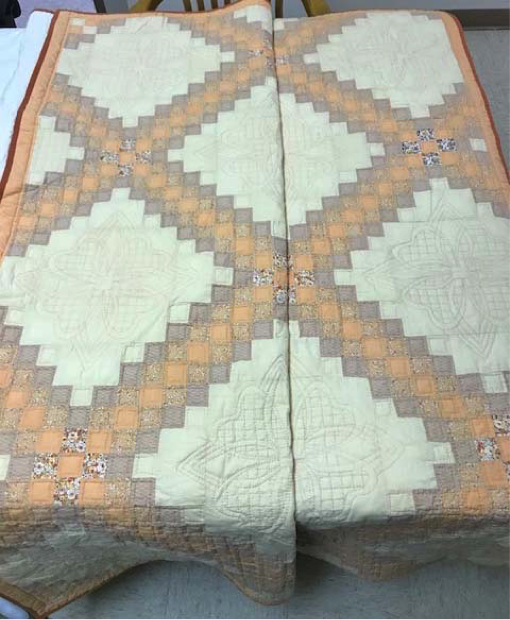
The quilting began in January of 2016 and was completed in the summer of 2017. Then a volunteer made and applied the binding and sleeve. The back bears a label that lists everyone who helped to hand quilt the piece.
Those that hadn’t participated in a major hand quilting effort previously learned a lot in the process—i.e. how to put a quilt in a frame and turn the frame, how to reach different areas of the quilt and how to practice the straight stitching in the pieced areas on printed fabric before quilting in contrasting thread in the fancy quilting pattern on the white fabric.
One of the mysteries of this overall donation is who was Mrs. Penney? Accession notes state that the quilting was “Paid by Requisition out of the Clothing Department” of the College. It is also unclear why the other two tops were not quilted at the same time. Possibly each quilt was made in a different year and either the funds were not available or the quilter was not available to complete the other two tops. Find-a-grave shows 10 women buried in Lubbock County with the last name of Penney. Of these four are very likely candidates due to their life dates and marital status, but two seem the most likely:
Sarah E. Penney (b. 1880, d. 1940), who was 50 in 1930 and whose husband Joseph died in 1924 or Susie Belle Penney (b. 1885, d. 1953), who was 45 in 1930 and whose husband Jink died in 1925. Both women may have needed additional income and were likely not caring for young children in the 1930s. Finding their obituaries might shed further light on whether one or the other was a quilter, but they are difficult to access at the moment on line. Just a little mystery to work out, but interesting evidence of a professional quilter in Lubbock in the 1930s.
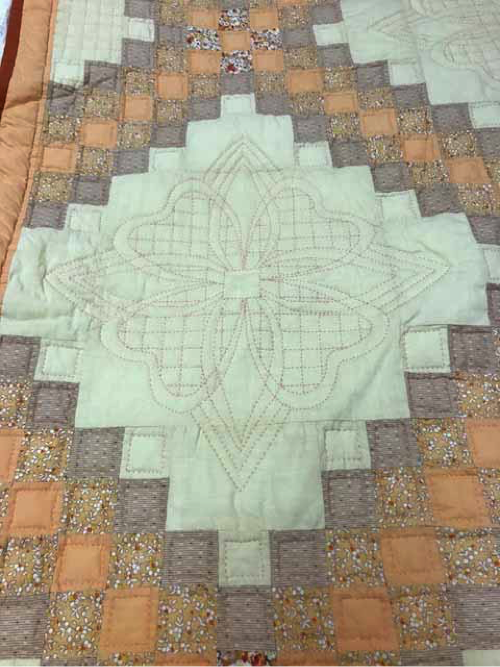
Those that have quilt tops often debate whether to quilt the top or not and if so whether to hand quilt or machine quilt. Unfortunately the answer to those questions is, “It depends.” In general a finished quilt is more likely to be respected and cared for than an unfinished top as evidenced by the fair condition of a top made by the women of a Baltimore area church in the collections of the Smithsonian Institution and the finished quilt made by the same women in the collections of the Dallas Museum of Art which is in near perfect condition. However the stress of quilting a top that is fragile may negate any effort to do so. So once again the answer to whether to quilt or not is “it depends.”
The friendships made over the quilting of this particular quilt will remain fond treasures for those who worked on finishing the work of the 1930s college students.
Or see what Katie is up to now as she shows you how to make artful log cabin quilts in Show 2210: Reimagining Log Cabin Blocks.
 |